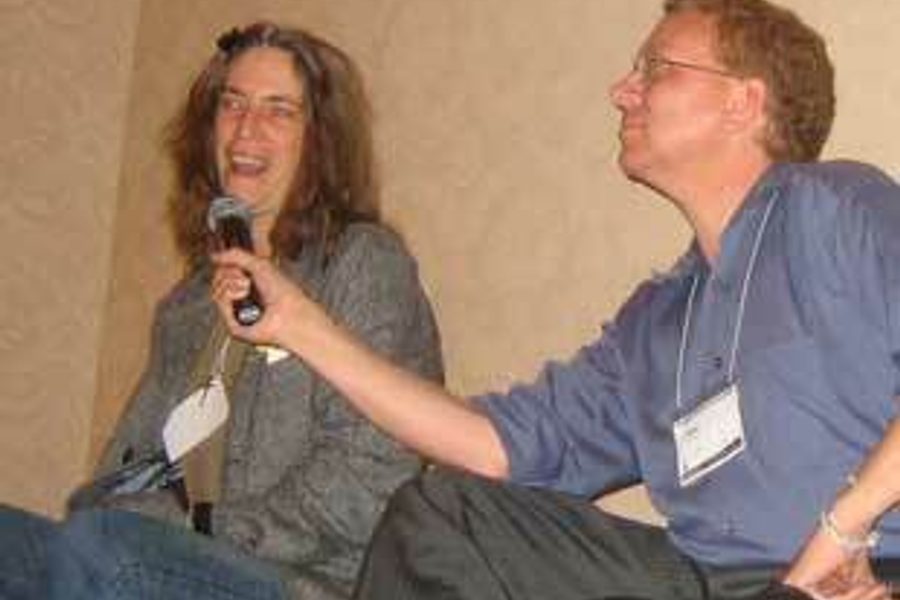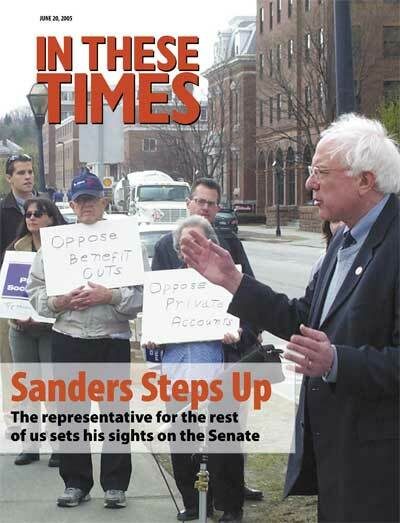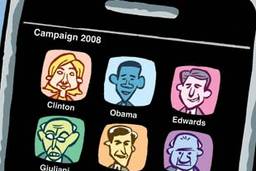Free Speech in Action
The media reform conference offered differences of opinion but a singular resolve
Jessica Clark

Attendees at this year’s National Conference for Media Reform in St. Louis were greeted daily by the gleaming Gateway Arch, a symbol of the new frontier.
And based on the packed corridors at the sold-out conference, the media reform movement is going places – even if the 2,500 attendees at this mid-May conference weren’t all traveling in the same direction.
Nonpartisan anti-consolidation activists bumped chests with passionate anti-Republican media monitors. Fierce advocates of public broadcasting went toe-to-toe with Indymedia activists who denounced NPR as “National Propaganda Radio.” And both media makers and advocates for diversity and gender equity in media – relegated to caucuses and informal meet-ups at a conference rich in sessions on media activism – groused at organizers from Free Press, the media reform group that made it all happen.
Juan González of the New York Daily News and Pacifica Radio’s “Democracy Now!” noted that he has been working in both media reform and minority organizations for many years, and wishes the former were more multicultural and the latter more radical. “Progress is not keeping pace with the times on either side,” he said. This theme echoed throughout the conference, intersecting with debates over what activists should pursue: media “reform,” “justice,” “democracy,” or “revolution”? “We cannot have a media democracy without social justice,” argued Sydney Levy of Media Alliance, a San Francisco resource center for media workers and activists. “There is no free press without freedom for people who are oppressed.”
Publishers, producers and writers struggled for a toehold at the conference, seeking to understand how once-arcane policy struggles over broadband licenses and ownership limits have reconfigured the swiftly changing media landscape. Conversations about new online and viral distribution systems for digital video and audio dovetailed neatly with policy discussions about the need to protect broadband pipelines and community Internet from commercial predation. Activists from cities around the country shared stories of working to secure free Internet access in order to spur local economic development and bridge the digital divide. (See “Is Low-Cost Wi-Fi UnAmerican?” May 9.)
The potential of such developments to dramatically cut the cost of media distribution is exciting, but the question of how content might be funded remained unanswered.
“I can’t emphasize enough the importance of building an infrastructure and support for independent media,” said Linda Jue of the Independent Press Association. That media will have to do its job as well, passing what Adam Werbach of Common Assets termed “the dinner conversation challenge” – providing content that’s engaging as well as political. And it must stay true to its roots. “We’ve cast light, we’ve created heat,” said writer and radio host Laura Flanders. “But will this new [independent] media remain accountable to the movement that called it forth?”
Despite their multiple approaches, most conference-goers seemed to find the event both valuable and motivating. “If people can’t stand under the same umbrella, should the movement just stop?” asked Glen Ford, co-publisher of The Black Commentator, an online publication. “Standing under the umbrella and believing that this is the place to be means not moving forward. There’s energy in this conference, and we need to harness the forward motion.”
Conservative attempts to dominate mainstream media also brought attendees together. The Institute for Public Accuracy’s Norman Solomon criticized the “warnography” that characterizes much of the reporting on the Iraq conflict. Author and activist Naomi Klein noted, “We have more than enough facts to bring down this government every week, but we lack amplification.” One-time conservative David Brock of Media Matters for America explained that his group is “attempting to organize the progressive base so that the media can hear from us every day.”
Brock’s group is just one of several media reform projects that have blossomed since the first conference in November 2003. A few standouts from this year include a multi-organization campaign spearheaded by Common Cause to promote a “Bill of Media Rights”; an ambitious project by Consumers Union called Hear Us Now that offers citizens an accessible guide to the tangle of media, technology and communications issues; and Project: Think Different, which works with students and artists to create pop culture that promotes civic dialogue and action.
“This has been a remarkable event,” said Free Press Field Organizer Amanda Ballantyne. “This has made me so confident that this movement is going to prevail.”
Download audio recordings of conference sessions.







